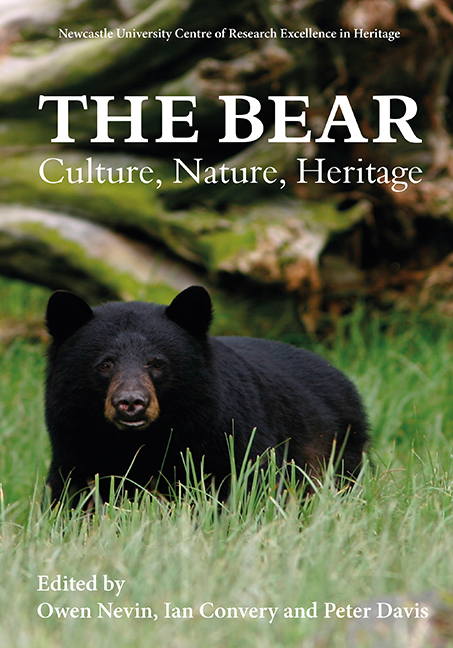Book contents
- Frontmatter
- Contents
- List of Illustrations
- Acknowledgments
- List of Abbreviations
- Foreword: The Bear: A Cultural and Natural Heritage
- Introduction: What is a Bear?
- Bear-People Interactions
- Bears in the Public Gaze
- Bear Biology, Management and Conservation
- Afterword: “It's Me Bear”: Reflections on a Unique Career Working with Bears
- List of Contributors
- Index
- Previous titles
Afterword: “It's Me Bear”: Reflections on a Unique Career Working with Bears
Published online by Cambridge University Press: 21 March 2020
- Frontmatter
- Contents
- List of Illustrations
- Acknowledgments
- List of Abbreviations
- Foreword: The Bear: A Cultural and Natural Heritage
- Introduction: What is a Bear?
- Bear-People Interactions
- Bears in the Public Gaze
- Bear Biology, Management and Conservation
- Afterword: “It's Me Bear”: Reflections on a Unique Career Working with Bears
- List of Contributors
- Index
- Previous titles
Summary
‘When I first started studying bears in 1965 they had varmint status, like a rat’
I remember vividly my first encounter with a bear. It was spring and some friends and I had decided to head out camping. We were teenagers and off on a great adventure. Having set up our camp site and with the evening settling into night, everyone started to head to bed. I remember thinking to myself that as the weather was so nice it would be a great night to sleep under the stars. As I was slowly drifting off to sleep I heard something moving toward me; immediately I was alert, my body had tensed. I lay there with the hair on my neck standing. Slowly, out of the darkness emerged a black bear. Terrified, I lay there still; it sniffed my feet and continued to sniff up my body; eventually satisfied that I was not a threat it moved over me to access the garbage bag we had left hanging on a tree. As I lay, following the bear's every movement with my eyes, I was as mesmerised by this animal as I was scared. This encounter was the starting point of my fascination with bears and, whilst my exposure to bears was, beyond that moment, limited, it would influence many of my decisions over the next few years.
It was some years later when I was studying at Michigan State University that my next major bear experience would come into place. In my junior year, the Research Director for the Michigan Department of Conservation selected me for a summer internship capturing and ear tagging black bears. As it turns out I was particularly good at it; in fact, in one month I had captured and tagged more bears than the project had in the previous year. Within two years I trapped and tagged 191 bears. At this point we were using conventional methods of trapping, either darting or leg snares, and the data we collected in the study was at the forefront of informing so much of the understanding we have today. It was an extraordinary project to be involved in and I remember being so inspired and excited by the programme.
- Type
- Chapter
- Information
- The Bear: Culture, Nature, Heritage , pp. 233 - 240Publisher: Boydell & BrewerPrint publication year: 2019



